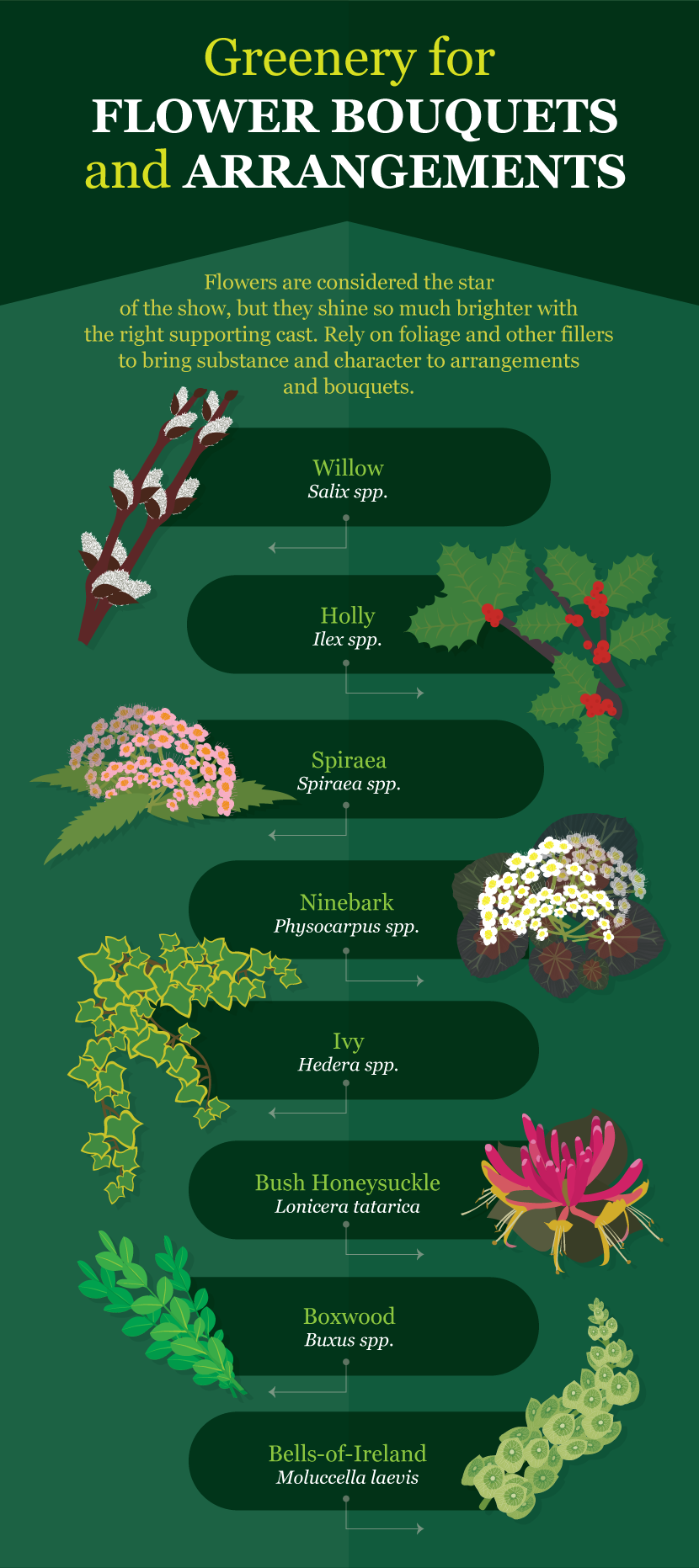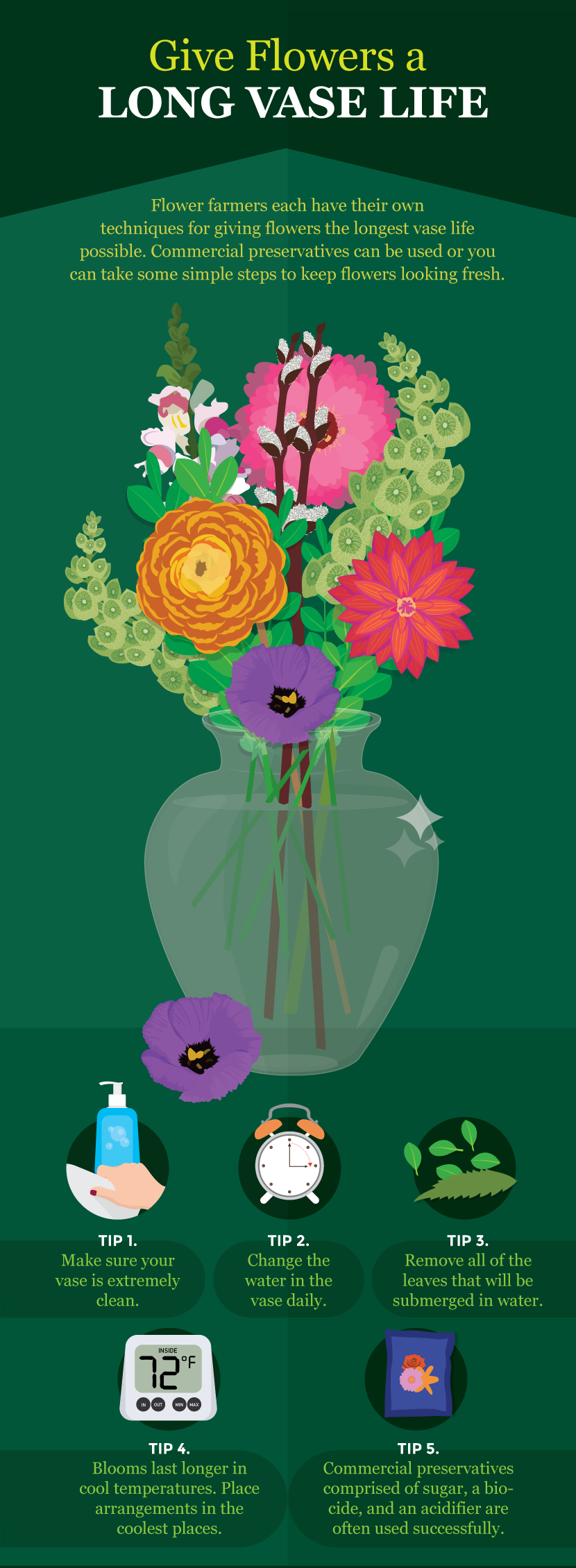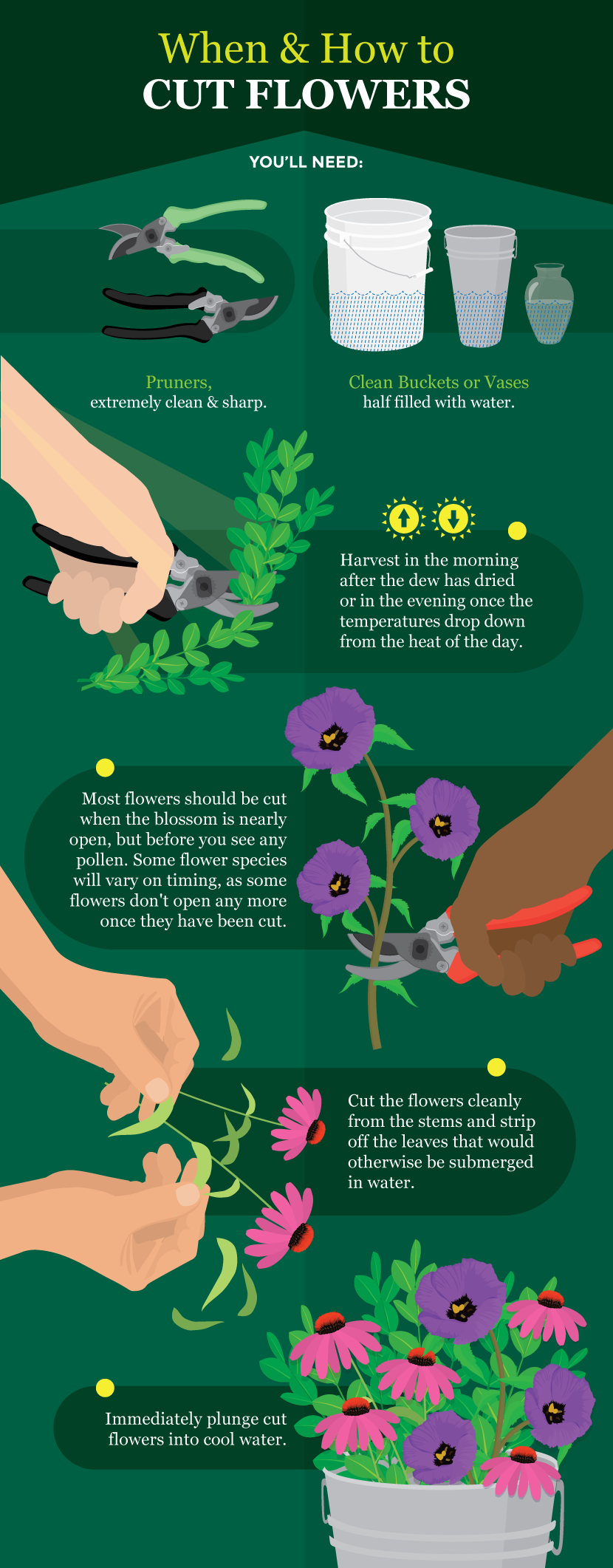A Guide to Growing Your Own Cutting Flowers
The only thing better than flowers blooming in your garden is fresh, colorful flowers in your house. With a bit of strategic planting, you can have fresh flowers in every room of your home. While any vase of flowers is welcome, there are certain species particularly suited for vase life. This is why many gardeners plant a “cutting garden” specifically for arrangements and bouquets.
If you’ve never cut armloads of flowers from their stems, you might be surprised at the emotions you feel during your first “harvest.” On one hand, you’re thrilled to have these beauties inside your home for pennies on the dollar. On the other, you might feel some guilt that you’re stripping the garden of its beauty.
Don’t let that guilt get the best of you! You’re soon going to be so tickled that you planted a cutting garden. Remember two things:
1. You are growing cutting flowers specifically to bring them inside to enjoy.
2. For many plants (particularly annuals), cutting off the flowers encourages more blossoms to show up in their place.
Of course, you’ll need to learn a little about the differences between annuals and perennials. You might prefer one or you might like some of each. Hint: Both types bring something to the cutting garden table.

Annuals germinate, flower, and die all in the same year. Their goal – in the name of species survival – is to produce as many flowers as possible within their lifespan, so they tend to bloom again and again during the same season. When planning your beds, remember that you will be pulling these plants out or turning them under the soil once they are spent. This gives you a lot of flexibility.
Perennials are the gift that keeps on giving. They die back at the end of the season, only to reappear the following year bigger and bolder than ever. You can easily propagate (create more plants) many types of perennials by dividing the root ball in the third or fourth year.
Perennial plants usually remain in their bed for many years. So you’ll want to give them an undisturbed permanent space. One exception is dahlias, which are tubers that may need to be uprooted, stored, and then replanted year-to-year.

Prepare Your Flower Beds
You can trust that your flowers actually want to grow, but there are some things you can do to ensure their success. Flowers perform best when they are given a site and soil that they love. Although the “perfect” location will vary according to species and environment, in general a good setting is one that receives full sun, eight to ten hours a day.
Dahlias are one of my favorite cutting flowers, so I always have one annuals bed in the full sun and another that receives light or dappled afternoon shade. I live in a part of Northern California where summers produce intense afternoon sunshine, and dahlias simply can’t take the late-day beating.
This shows how important it is to know something about your own climate and growing zone. If you’re new to gardening, contact a local nursery or find out if your area has a master gardeners group.
Next, decide whether to grow your flowers directly in the ground or in raised beds. In this, too, each approach has advantages.
In-Ground Garden Beds
It might surprise you to know that in-ground beds eventually become my favorites. They require more effort, but I enjoy nurturing every bit of earth I can find until I have the rich, loamy soil that plants love. In-ground beds are less confining, leaving you room to easily broaden them if necessary. The trade-off here is that it’ll take several years for the garden to reach its full potential. When it comes to super flower production, the magic technique is to use copious amounts of compost (decomposing organic matter). I have an endless supply of rabbit, horse, goat, and chicken manure, but you should be able to find good compost mixes at your local nursery.
Raised Garden Beds
Most people I know prefer to start with raised beds, and I can see why. Considering that you’ll likely use bagged soil to fill the bed, you’re practically guaranteed control over the soil. Having everything confined to a box means less soil erosion and, as you’ll be using your own blend of soil, compost, and so on, you should also have good tilth. So the raised bed has both good drainage and water retention at the same time. Being taller, these beds can make maintenance tasks such as planting, weeding, and feeding easier. Plus, raised beds warm up faster and hold heat longer, which means an extended growing season on either end.
Whether you plant directly into the ground or use a raised bed, always aim for nutrient-rich soil that’s friable and porous. The soil should have a full, forest-floor aroma and resemble coffee grounds in your hands. One of the best ways to achieve this state of soil nirvana is by adding plenty of compost to your beds all year round.

Six Tips for Growing Flowers for Special Occasions
Growing cutting flowers for your home can be the gateway to something bigger. Many people decide to grow them for a special occasion, such as a wedding, anniversary, birthday party, or other event. To those adventurous souls, I offer some advice:
1. Do your research. If you’ve never grown flowers for an event before, plant only those that are supposed to grow in your zone during the time of your event. Don’t make it harder on yourself and the plants by forcing something to perform during the wrong season. Leave that to the pros.
2. Grow special-purpose flowers in a greenhouse or hoop house, if possible. A more controlled environment is the best defense against the elements, fickle weather, and some garden pests.
3. Part of the temptation to grow your own cutting flowers is to save money. If this is a major event, consider growing only the greens and filler plants. You’ll still save cash but you’ll have less pressure. Spend a little on the larger, special blooms produced by a flower farm or floral designer.
4. Double your chances of success by having a friend duplicate your plantings in their own garden.
5. Read below to learn about “succession planting,” which will help ensure that you have the correct number of flowers at the correct stage of bloom for your event.
6. Have a local flower farmer on speed-dial should Mother Nature pull a fast one on you.

Succession Planting
Succession planting means staggering planting times in order to have a consistent flower or crop production. It’s most often done with annuals. To master this technique, you need to understand and plan for both the species you want to grow and your climate.
It goes something like this: You plant zinnias, either as seeds or starts (young plants already started in a greenhouse). The following week you plant another group and the next week another group. You can stagger the plantings from one to three weeks apart–the timing will depend on how long a species takes from seed to bloom, as well as how warm your climate is. The longer the growing season, the more plantings you can do.
You can see why succession planting is perfect if you’re planning for a special occasion. Not only does it give you more flowers for a longer period of time, it’s also a way to hedge your bets in order to get the amount of flowers you need at the right stage of bloom.
Once you’ve grown your own cutting flowers, you’ll never want to be without them again. Start with the easiest varieties, but be sure to add a new variety or two each year. After a few seasons, you’ll discover which flowers thrive in your garden and bring you the most joy.
Embed the article on your site

























































